At the eastern edge of England, where the River Blackwater meets the North Sea, a small community whose size oscillates with the seasons lives without any connection to the National Grid.
The Othona Community at Bradwell-on-Sea in Essex has just four permanent residents, including wardens Richard Sanders and his wife, Debbie.
Mr Sanders describes the 20-acre (8-hectare) Othona site as a “Christian community that is open to all faiths and none”.
“We have a mixture of people who have been coming since the ’50s or ’60s and people coming along for the first time,” he said.
“The ethos is worship, study and play, and people here get to meet others that they might not normally come across.”
During the busier summer months, the retreat can have up to 60 people living there.
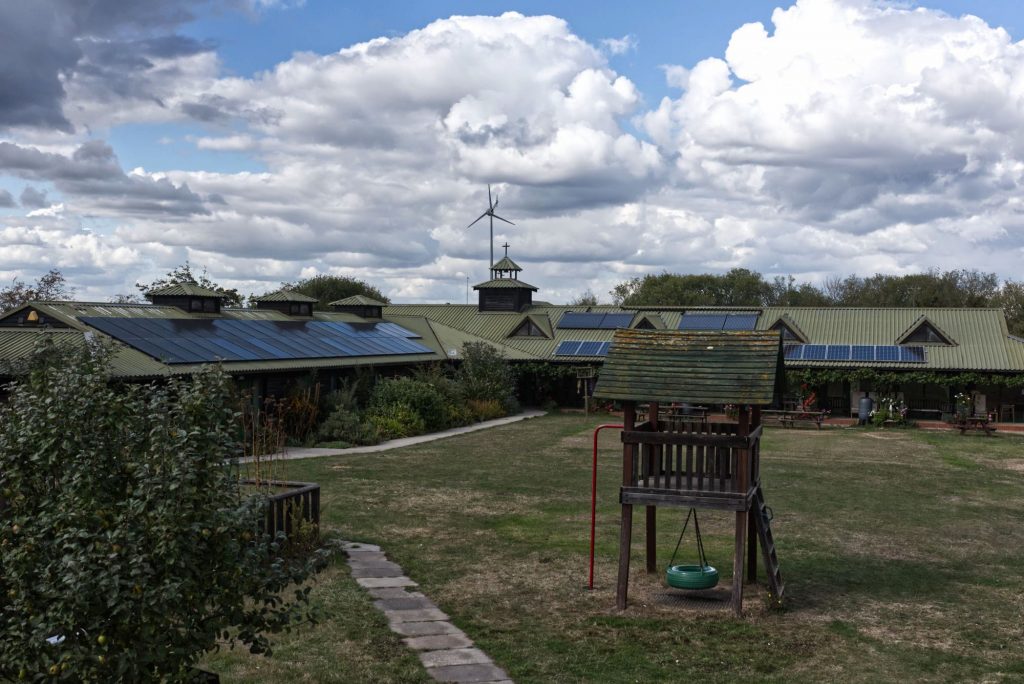
Powering Othona
25kW Solar array plus a second, older, 5kW array and solar thermal tubes which help heat the water.
5kW Wind turbine with plans lodged for a newer 25kw turbine on site.
As a location off both the electricity and gas grids, the Othona Community is in a tiny minority.
Figures from the energy regulator Ofgem suggest the number of fully off-grid households across the UK could be between just 500 and 2,000.
So how is Othona powered?
“We’re right on the edge of nowhere,” Mr Sanders said.
“So we’ve just developed from a place with no electricity, to a place with some generators, to a place with a wind turbine and solar panels.
“We’ve always been a place where people have to think about their use of resources. In the earlier days we used to have to tell people not to use two hairdryers at once or it would collapse the system.
“My feeling is that going on the grid would kill this being the sort of place where you think about energy rather than take it for granted.
“Being off-grid is an opportunity for people to think about alternatives and the fact that there are alternatives.”
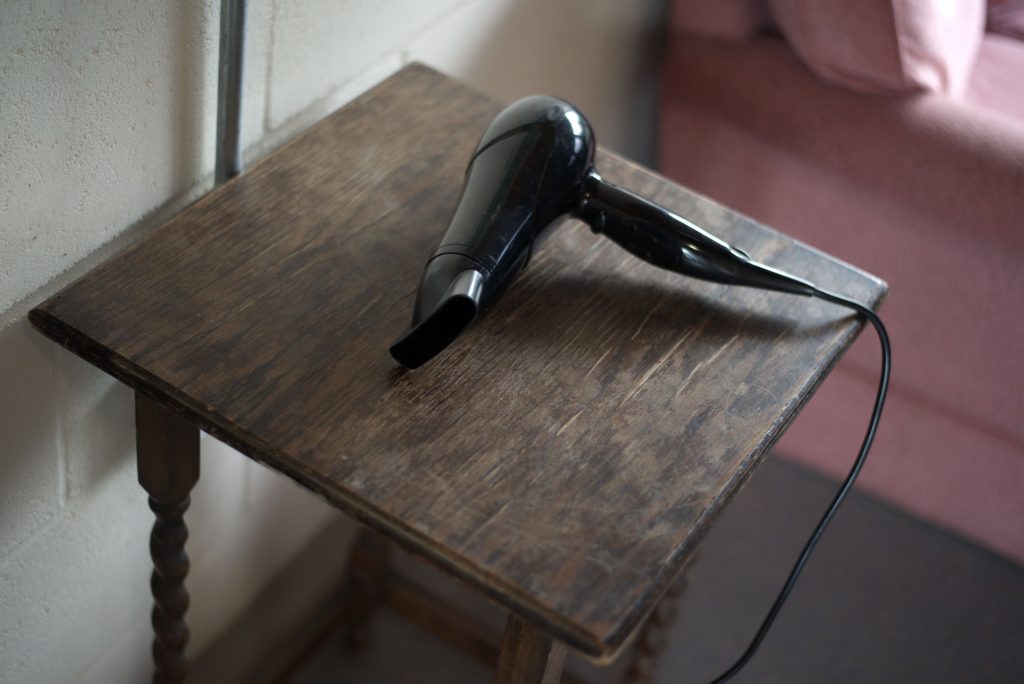
The vast, commercial-style kitchen now runs on electricity rather than gas.
Not having to pay the current price of gas is a relief to Mr Sanders.
“I wouldn’t like to be paying the kinds of prices there are for gas now for the amount we use,” he said.
“I mean, we still use the diesel [for the back-up generator] and that’s gone up, but not as much as the gas.
“Even the price of the wood pellets that we use for the boiler have gone up – I suspect because people are using that if they can as an alternative to gas.”
The centre is hoping to add a second wind turbine capable of 25kw in the near future, meaning they can do away with the back-up generator altogether.
And while the centre is connected to the water mains, it also has its own sewage system dating back to the 1980s in which fluid waste is filtered through reed beds and into a pond, which doubles as the centre’s fire hydrant [solid waste is taken away by tanker].

The centre also has a small orchard and a group of hens that lays a handful of eggs daily.
“People enjoy what is grown on site – so tomatoes and cucumbers in the summer, and we’ve got a lot of squashes at the moment and a few varieties of potato.
“There was, in the 1970s, an attempt to become fully self-sufficient and they had cows, more chickens and a pig and ploughed the fields, but it turned out people were spending more time looking after animals than looking after people, and primarily we are about looking after people.”
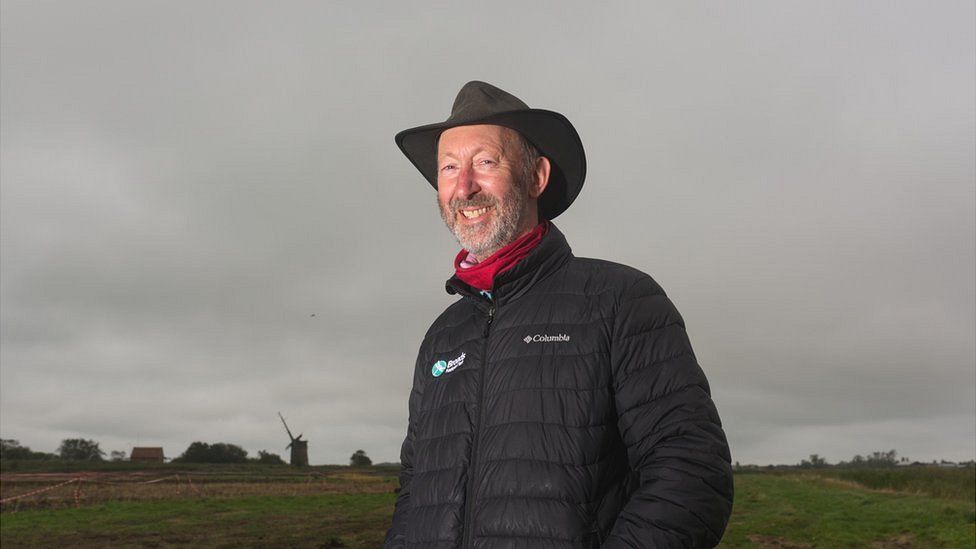
About 90 miles (145km) north of Bradwell-on-Sea, Dr John Packman and his wife Caroline live in their self-built home near Southwold in Suffolk.
The couple did not set out to self-build an eco home. Rather, their hands were forced by circumstance – in this case, buying a house so rotten and damaged it proved to be unsalvageable.
“What I’ve learned from building something new and from scratch is that the fundamentals are so simple, really,” said Dr Packman.
“The key thing is orienting the house with the sun,” he said. “We’ve got a big roof on the south side and it is glazed on the south side with a big overhang which helps keep us cool in the summer, but on a winter’s day, when the sun is low, you can get up to 20C (68F) because of the solar gain.”
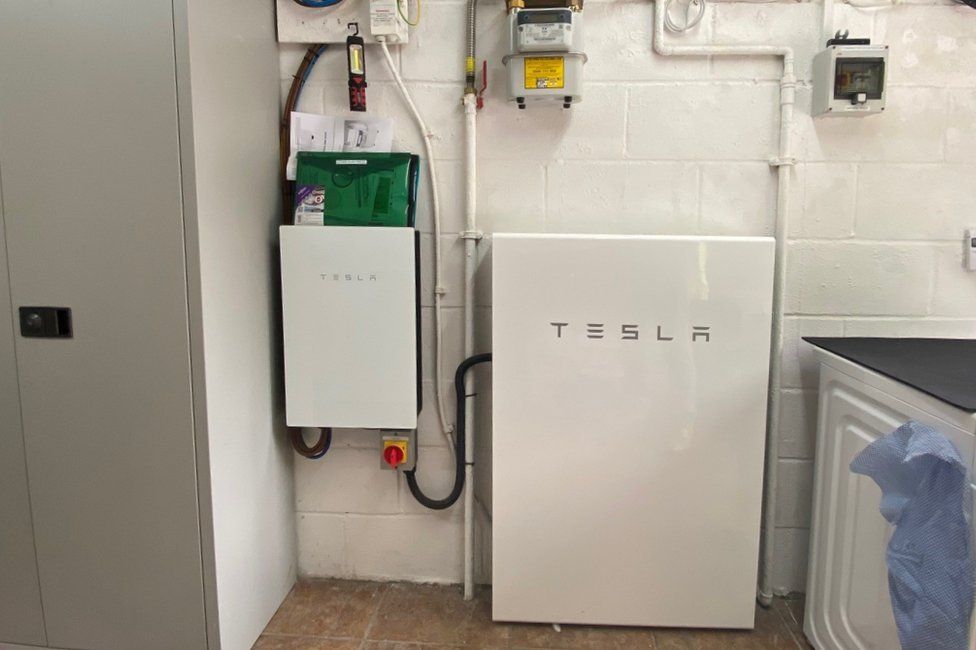
On the roof of the Packman home are 20 solar panels which, rather than being placed on top of the roof, were installed instead of tiles. Together they produce 4kw of power and feed into a Tesla battery system which, when it senses a coming storm, can fill up on energy from the grid if needed.
The couple live in an area overseen by UK Power Networks, which covers London, the East and South East. The energy operator said about 150,000 of its household customers (less than 2% of the total) fed electricity back into the grid, primarily from solar panels.
Dr Packman said new builds made it much easier to be more self-sufficient.
The floor of the couple’s timber-framed home has been insulated with specially treated recycled paper and the water is heated using an air source heat pump.
The toilets of their home are flushed using rainwater harvested from the roof.
“Doing stuff with the existing housing stock is difficult,” said Dr Packman. “It is expensive and difficult and needs government initiatives and support.”
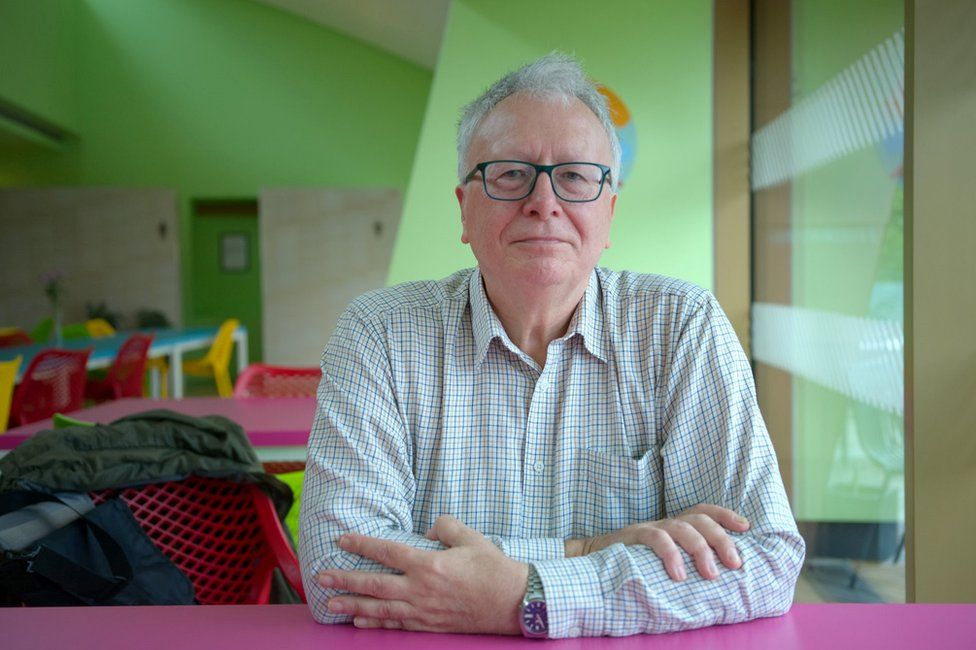
Demand for photovoltaic (PV) panels is rampant, according to Peter Chisnall, a trustee at the Colchester environmental charity En-form.
Suffolk County Council is just one of the local authorities that runs a Solar Together scheme, which buys solar panels in bulk for interested residents.
“They announced the latest round recently and they had about 7,000 people register, which is phenomenal,” Mr Chisnall said. “People are thinking about this now.”
And yet, he said, perhaps the first step towards greater self-sufficiency is not putting up solar panels or harnessing the power of the wind, but simply using less energy in the first place.
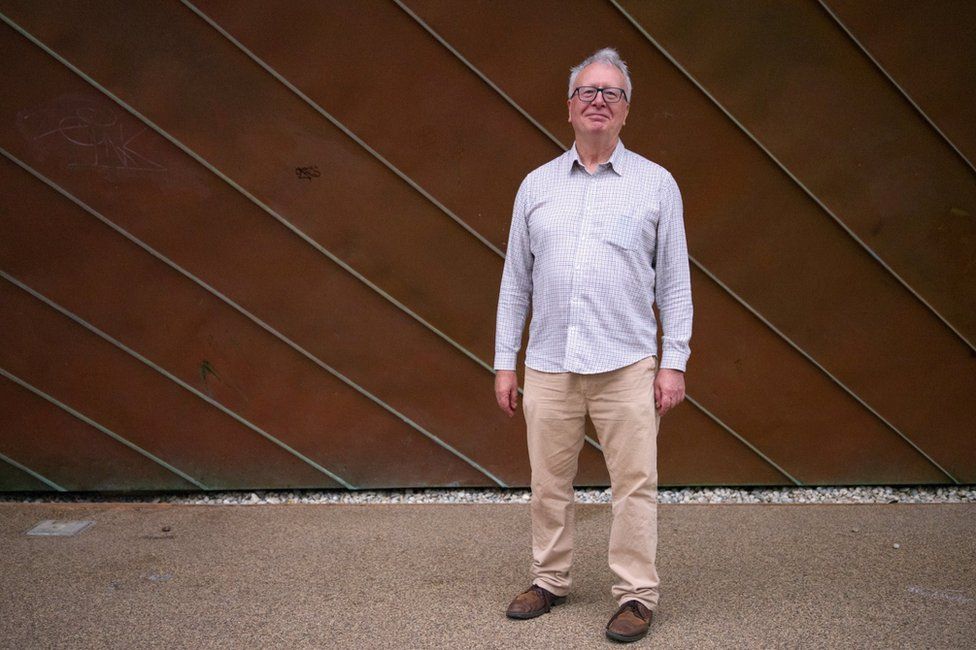
“The one good thing about the cost of living crisis, perhaps, is that it is making us think about our energy use,” said Mr Chisnall, whose home has a 4kw PV system that has generated about 30,000kwh of energy in the past 10 years. “We are very profligate.
“If you think of your energy bills, 80% of what you pay usually is on heating and the other 20% is your lights, your gadgets and all of those other things.
“If you want to reduce that as much as you can then you want to look at super insulating your house, reducing thermal bridges and making it as airtight as possible.”
An advocate for Passive House standards, which result in ultra-low energy buildings, Mr Chisnall said making existing homes more energy efficient could prove costly and disruptive.
For a typical three bedroom semi-detached home, he said, the cost of adding various energy saving measures could cost £25,000 – £30,000. There are various grants available, however, to help meet those costs.
“Ideally it should be a whole-house retrofit, even if staged over several years,” he said. “But even if some of the measures can be installed it will help.”
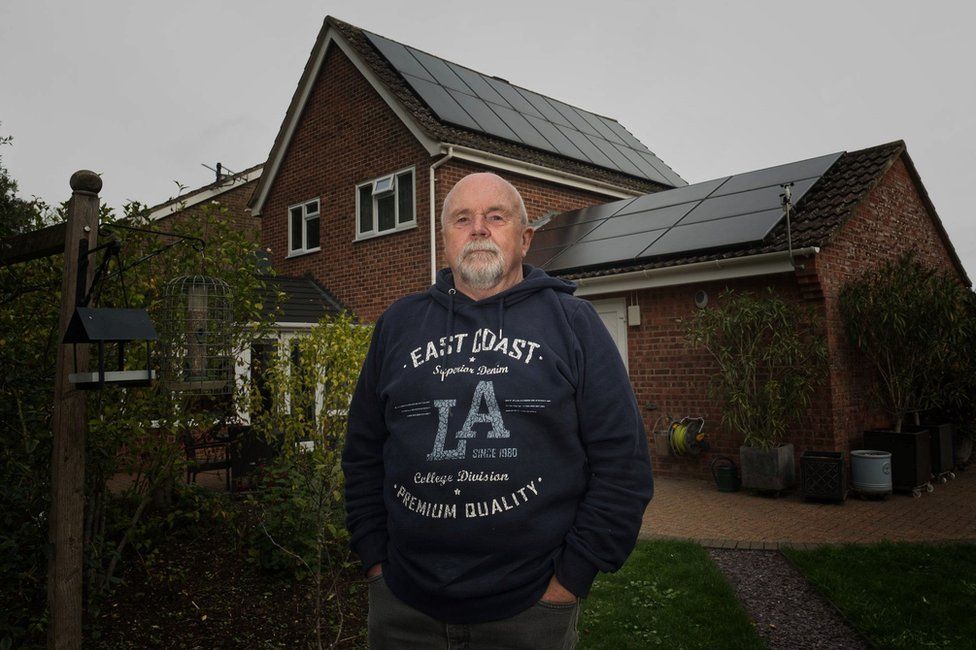
Stephen West’s 1980s home in Hethersett, Norfolk, is an example of the type of successful retrofit Mr Chisnall mentions.
He installed two sets of solar panels seven years ago and, in 2019, connected the panels to a Tesla Powerwall – a rechargeable lithium-ion battery.
“It was about not spending as much money as well as not using as much power from the grid,” he said. “This last year they have paid for themselves, so from now until 2035 it is all profit and that profit increases depending on energy prices.”
He has had low-emission windows installed, super-insulated wherever possible, replaced the gas oven with an electric one and bought an electric car. He had wanted an air source heat pump but was told his radiators were too small to work in his home.
“It is the practicalities of it because the house is just not designed for it,” he said. “I would love to get off gas. There are systems I could use, but I can’t fit them in.”
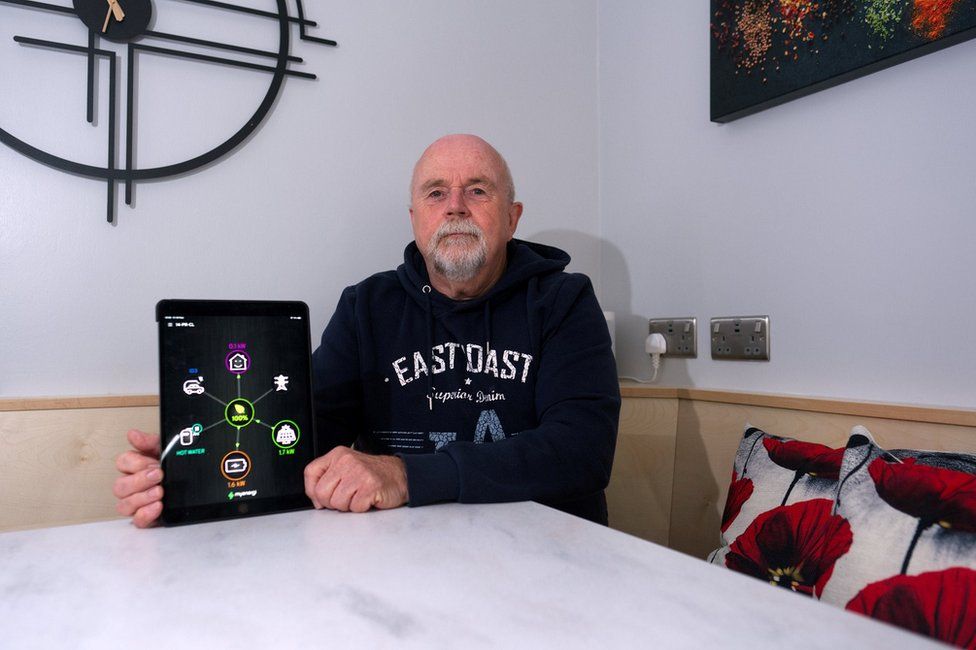
The solar panels have saved Mr West about £12,500 during the last seven years.
However, he still faces an increase in energy costs. The cost of gas is about to rise from 7p to 10p per kilowatt hour (kWh).
And he continues to pay the electricity standing charge despite the fact that during the brighter months he is not using any electricity from the grid.
“I would love to start again with a Passive House, I would love to do that.”

